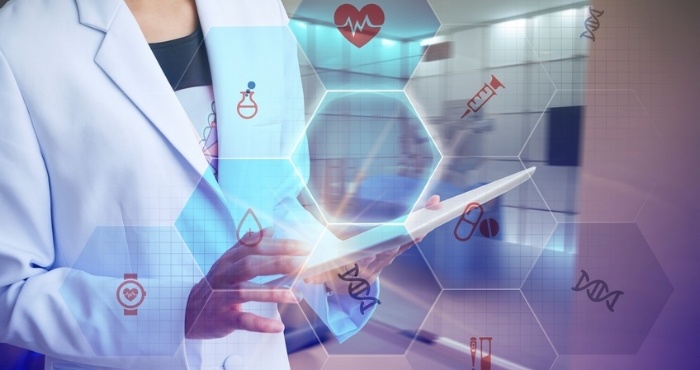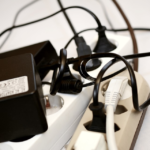From self-driving cars in the transport industry to delivery drones in e-business, we are indeed living in the information age. Now more than ever, technology has become an integral part of our everyday life. Moreover, technology is evolving pretty quickly in different aspects of our lives to meet the ever-growing demands and to better overcome the challenges of humanity. This has led to development that has never been witnessed before.
An excellent example is the gambling industry, where instead of visiting a land-based casino, players can switch to internet-based platforms such as the casino online VulkanVegas to enjoy the same games but from a remote location. This saves a lot of travelling time and expenses, with the convenience of playing games even on mobile devices.
The healthcare industry has also not been left behind when we talk about making technological strides. More innovations have been introduced or advanced to ensure prevention, early detection or diagnosis of illnesses, improve treatment and hasten the recovery process in patients.
For the most part of the 2020 calendar year, the novel Coronavirus took the whole world and, most specifically, the healthcare industry by storm. As an industry with more roles and responsibilities in the pandemic, technological progressions and innovations in medicine will most definitely have a significant impact in transforming the world and making it safer for humanity. Some of the latest technological advances to look out for in medicine are:
Telemedicine
Following the outbreak of the Covid 19 pandemic, healthcare systems have been pushed to the brink. Of course, patients are still suffering from other illnesses and injuries, hence the need for continued healthcare with minimal contact. Telemedicine Alabama has become popular during this period as it enables medical professionals to provide services such as diagnosis and patient monitoring from remote locations in lieu of an in-patient visit.
This has been made possible through mobile applications and video conferencing technology. Telemedicine has proved to not only be more cost-effective for patients but also as a tool to protect healthcare professionals from exposure to Covid-19 and keep vulnerable and healthy at home.
3D Printing
With the advent of 3D printing in the 2010s, the possibilities of what can be created are limitless. Like all other industries, the medical industry is finding new applications of 3D printing every day. In the orthopedic field, for example, it is possible to manufacture patient-specific prosthetics, casts and finger splints via this technology. In pharmacy, drugs that have a faster absorption rate have been printed due to the layer-by-layer manufacturing process of 3D printing. Tissue engineering has enabled surgeons and medical students to practice complex procedures before carrying out an actual surgical procedure.
Big Data and Predictive Analytics
Hospitals and clinics around the world generate large volumes of data in the form of patient records and test results. Analyzing this data, known as big data, will enable early disease detection, better treatment and reduced costs. Big data can be used to better tailor healthcare needs to specific patients as it can help deduce future healthcare needs for different individuals by analyzing their current habits, including their activity on social media and history of visits to clinics or doctors.
An example of the effectiveness of big data analysis is in the prevention of opioid abuse in the US. By studying decades of insurance and pharmaceutical data, analysts have managed to detect specific risk factors that accurately predict whether an individual is at a high risk of abusing drugs such as opioids.
Health insurers would be happy to learn that tracking patient claims through big data can help reduce insurance fraud. Analytics can also shorten claim processes for higher customer satisfaction and reduced labour costs.
Medical Drones
There has been a lot of buzz around drone delivery services, especially by huge companies such as Amazon. You’ll be surprised to hear that they will not be the first to deploy this technology for the purpose of delivering services.
Medical drones are already in use most commonly in developing countries like Rwanda and Ghana, where there is poor or no infrastructure to facilitate timely delivery of much needed medical supplies, such as vaccines and blood. With the pandemic, we can only expect the scope of this technology to skyrocket as patients would have access to medical supplies in the comfort of their homes.
Smartwatch ECG
Heart-rate monitors have become commonplace in smartwatches and fitness trackers, with brands like Apple leading the way in this sector. However, there is a new baby in town, namely the electrocardiogram or ECG. ECG has been introduced into wearable technology, and it is fast becoming popular as it’s designed to measure how well your heart is working, unlike the other heart monitoring technologies that simply measure blood flow. This is instrumental in detecting Atrial fibrillation to address issues before they turn into complications. Some of the smartwatches with ECG capabilities have also been used to measure blood oxygen and blood pressure. However, all these technologies come with a few challenges that may include issues of privacy in the case of big data or accuracy in smartwatch ECG. Thankfully, these challenged are being addressed with each dawning day to boost safety and efficiency on the existing frameworks.







